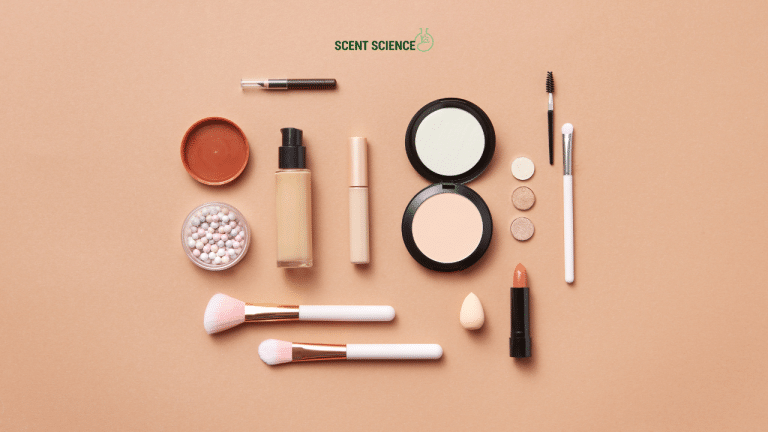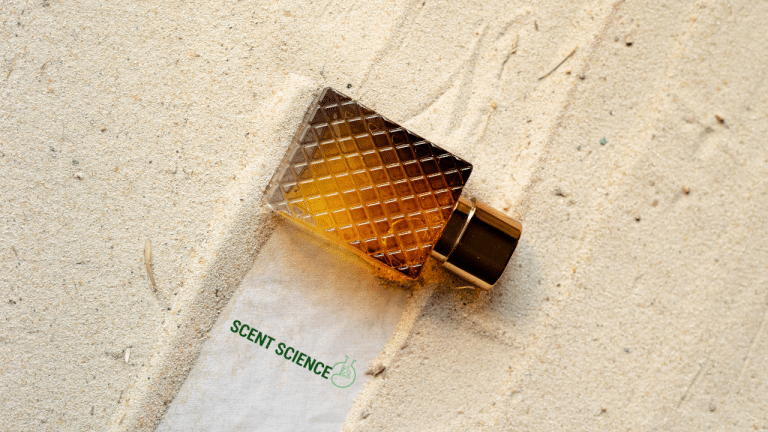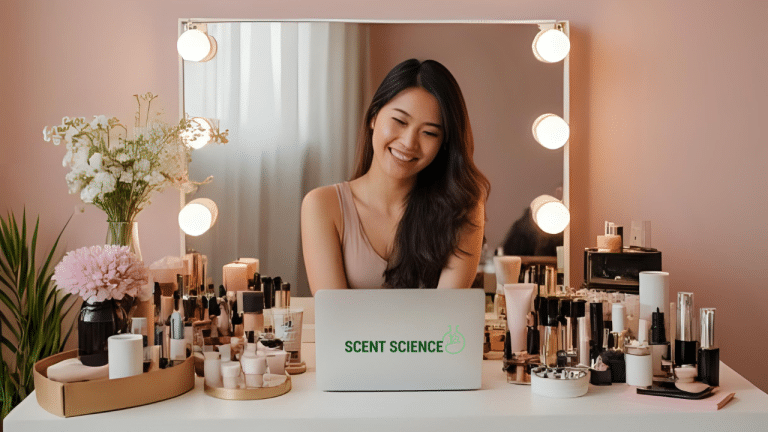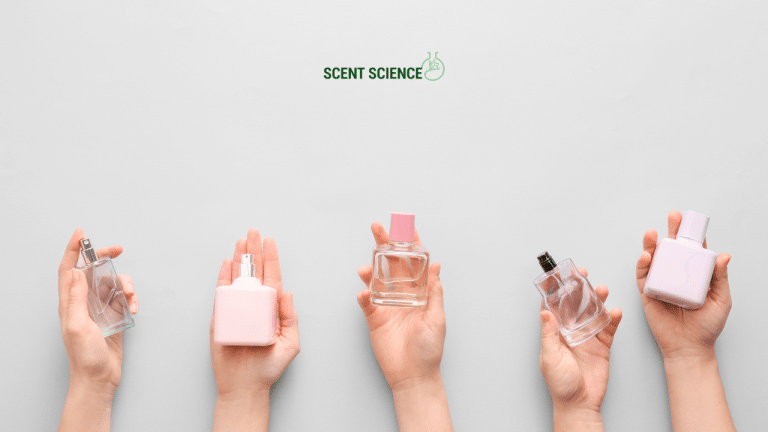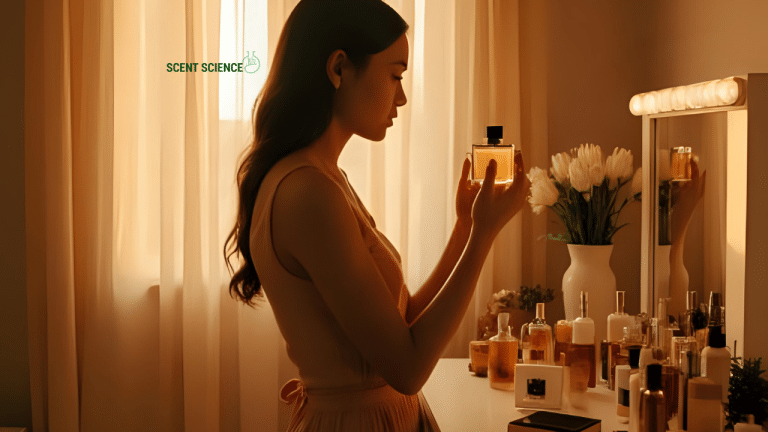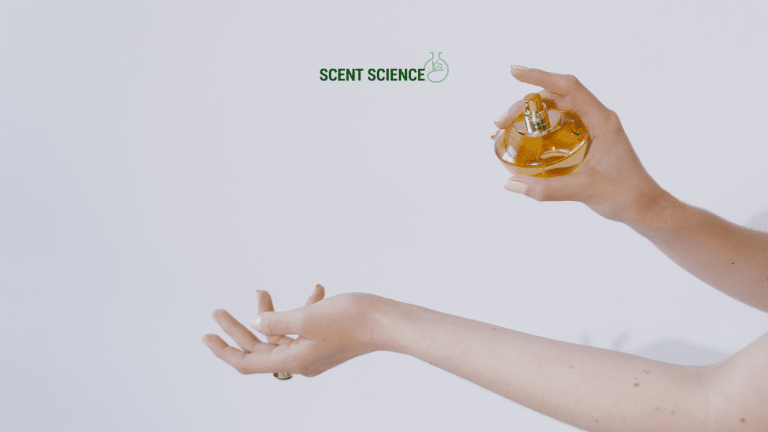Welcome to a transformative journey through the enchanting world of natural scents—a path where holistic wellness, self-discovery, and science converge to create your distinct and personal fragrance. As an expert in aromatherapy and holistic wellness, I’m here to guide you through this comprehensive exploration, underscoring both technical insight and practical application, ensuring that you indulge not just your senses, but elevate your overall well-being.
Table of Contents
ToggleThe Resonance of Natural Scents in Personal Wellness
Days cloaked in artificial fragrances may offer temporary allure, yet their constituents often harbor synthetic compounds, masking the subtlety and profundity of what the natural world bestows. Unlike their manufactured counterparts, natural scents derive from botanical materials and promise authentic connection, offering multi-dimensional wellness benefits—from mood enhancement, stress reduction, to strengthening emotional resilience. 🌿
Natural scents symbolize more than just pleasant aromas; they encapsulate profound healing potential, laying the groundwork for personalized self-care practices. This guide is designed to help you chart your course through this aromatic landscape, informed by research, fortified by examples, and aligned with industry best practices.
Understanding the Essence of Natural Scents
The Basics of Fragrance Notes
In the realm of perfumery, understanding fragrance notes is quintessential. These notes are categorized into three families:
- Top Notes: The immediate aroma upon application, consisting typically of light, volatile compounds. Examples are citrus and herbal scents like lemon and mint.
- Middle (Heart) Notes: These embody the core of the fragrance and emerge as the top notes fade. Options frequent heart notes with essences like lavender and rose.
- Base Notes: Forming the foundation, these notes linger the longest on the skin. They include deeper fragrances like sandalwood and vanilla.
A nuanced blend of these notes composes a full-bodied natural scent, embedding your unique signature with each application.

The Science and Research Behind Natural Aromas
The impact of natural scents extends beyond pleasure, propelling into facets of psychological and physiological wellness. Studies have documented the effects of specific essential oils:
- Lavender: Dzi-ya et al., 2016 demonstrated lavender’s anxiolytic benefits, reducing anxiety symptoms by 31% when administered through aromatherapy inhalation.
- Peppermint: Research by Raudenbush et al., 2009 found peppermint aroma can significantly enhance cognitive performance and mood, offering an invigorating mental boost. 🧠
Exploring these aromas invites a deeper understanding of how scents interact with the brain’s limbic system, influencing mood and emotional health—key tenets of aromatherapy benefits.
Crafting Your Signature Scent: Steps to Success
Creating a unique fragrance requires personalization. Follow these crafted steps, enriched with real examples and case studies.
Step 1: Engage with Your Preferences
Initiate with introspection—chart moments in your life connected with specific scents, personal memories, and emotional responses. Evaluate testimonies from fragrance enthusiasts who transitioned their affinity from commercial perfumes to personalized natural scents, noting underlying constants in their preferences.
Step 2: Conduct a Scent Profiling Exercise
Utilize a scent profiling methodology to structure your aromatic inclinations. Distill each aroma type into its experiential profile:
- Woody: Grounding and calming, found in forest treks,
- Citrusy: Refreshing and enlivening, akin to sunlit mornings.
Implement participatory workshops or guided fragrance tours to profile chosen scents accurately, leveraging industry guides and extraction methodologies from credible sources.

Step 3: Formulate Your Blend
Model after best practices and technical frameworks validated by fragrance experts:
- Assemble a kit of high-grade essential oils (e.g., reputable suppliers adhering to GC/MS testing protocols).
- Layer your fragrance: Begin with top notes, infuse middle, and ground the base—conforming to tried-and-true mixing ratios (e.g., 30% top, 30% middle, 40% base).
When constructing your blend, heed the balance through iterative tests and feedback critiquing sessions.
Applying Your Signature Scent: Practical Pointers
Practically applying natural scents involves correct techniques and understanding of skin chemistry for maximal benefits:
- Dilution Principle: Dilute concentrations with a carrier oil (five drops per teaspoon)—ensuring skin-friendly application.
- Pulse Points: Focus applications on pulse points for pulsated warmth dissemination, such as wrists and neck.
Examining customer feedback and efficacy ratings from top perfumers can enhance this alignment, enshrining your bespoke scent protocol.
Embracing the Broader Horizons: Aromatherapy Benefits

Integrate your scent attributes into larger wellness philosophies by delving into documented case studies:
An investigation into ambient eucalyptus sprays among office workers documented a 22% reduction in self-reported stress levels. 🌕 By selecting lung-opening and refreshing combinations for high-stress environments, results become more profound and meritable.
Aromatherapy setups in homes balanced with naturally tuned humidifiers capture ambient mood elevation and clinical therapy applications.
Maintaining Your Natural Fragrance Collection
A well-cared-for fragrance collection is essential for lasting clarity and potency:
- Store oils in UV-protective glassware to maintain formula integrity.
- Regularly rotate open scents every six months to manage vitality.
Survey manufacturer guidelines, adhering to storage protocols optimal for essential longevity.
Embrace Your Olfactory Journey
The journey toward discovering your signature scent is a deeply intuitive and rewarding quest—each step precedes an elevation and expansion in how you perceive the natural world. Through authoritative insights, robust experimental processes, and careful consideration, your signature scent becomes an integral component of your self-care narrative.
Engage with validated guides, partner with aromatherapy circles, and pursue this transformative aroma excursion with the knowledge that each fragrant droplet enriches your serene embrace with the earth.
Let this guide instill the confidence to explore at depth, acknowledging your boundless capacity for joy and tranquility. 🌺
In every application, with every inhalation, may you discover serenity and liberation—from the world, through nature, and within yourself.
Frequently Asked Questions
What are the benefits of using a hair mask in my hair care routine?
Using a hair mask can provide several benefits, including hydration, smoothing, strengthening, curl definition, heat protection, and damage repair. Hair masks infuse the hair with moisture, help coat the hair shaft to seal split ends, reduce breakage, and protect the hair from heat styling and environmental damage[1][4].
What ingredients should I look for in a hair mask?
Effective hair masks often include ingredients such as coconut oil, argan oil, shea butter, honey, avocado oil, green tea, and coconut water. These ingredients provide nourishment, moisturize, and protect the hair, offering benefits like softening, moisturizing, and protecting against damage[2][5].
How often should I use a hair mask in my routine?
You should use a hair mask whenever your hair feels dry, unmanageable, or in need of intense hydration. This can vary depending on your hair type and needs, but generally, using a hair mask once or twice a week can help maintain healthy and moisturized hair[1][4].
How do I apply a hair mask for the best results?
To apply a hair mask effectively, shampoo your hair first, then apply the mask, focusing especially on the ends where hair tends to be the most damaged. Leave the mask on for anywhere from 10 minutes to overnight, depending on the type of mask and your hair’s needs[1][4].
References


